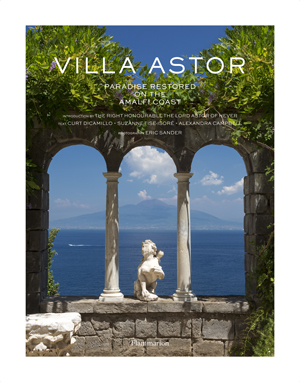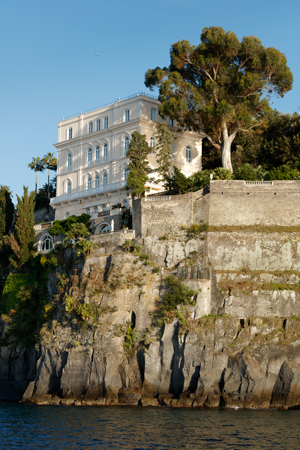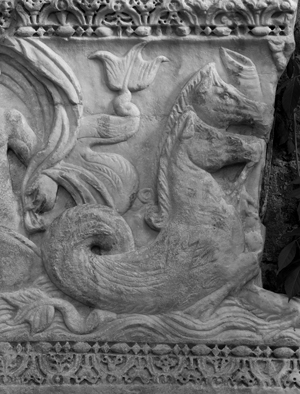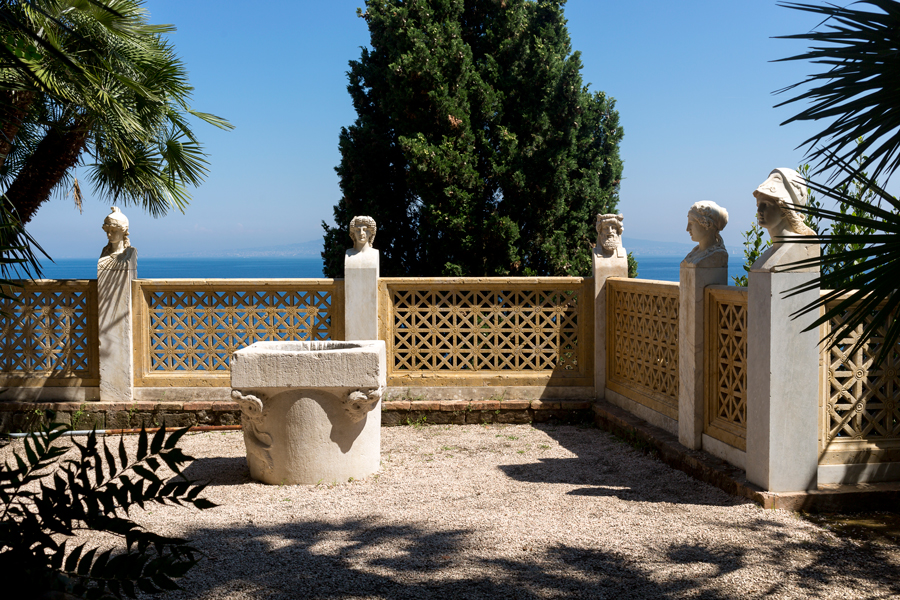Review: Villa Astor – Paradise Restored on the Amalfi Coast
William Waldorf Astor’s love of Italy, its landscape, art and culture, featured in all the homes he possessed, however, it was at Villa Astor, high on a rocky promontory overlooking the Bay of Naples, in the charming town of Sorrento, where he created a tropical garden and a home that became the fruit of his long-held passion for Italy.
Diplomat, financier, author, publisher and real estate magnate, William Waldorf Astor (1848-1919) bought the old villa and surrounding properties, originally known as Aux Roches Grises in 1905. He changed its name to Villa Sirena and for the rest of his life turned it into a paradise of art, beauty, architecture and exquisite gardens. The eccentric extravagant and discerning art lover spent a decade restoring and decorating the house and gardens with an outstanding collection of classical artefacts.
 ‘Villa Astor – Paradise restored on the Amalfi Coast‘ is a large coffee table publication with lush photography. The book divides into five parts beginning with an Introduction by the Rt. Hon. the Lord Astor of Hever. Here he paints for us William Waldorf’s character and we discover how his Italian idyll was the key to his happiness, the place where he could escape and be free to lead a simple life in peace.
‘Villa Astor – Paradise restored on the Amalfi Coast‘ is a large coffee table publication with lush photography. The book divides into five parts beginning with an Introduction by the Rt. Hon. the Lord Astor of Hever. Here he paints for us William Waldorf’s character and we discover how his Italian idyll was the key to his happiness, the place where he could escape and be free to lead a simple life in peace.
The first part looks at the life of William Waldorf Astor, his purchase of Cliveden and Hever Castle and his love of Italy. The second part deals with Astor and Italy, his life in Sorrento, his love of collecting art and the garden’s design.
We then move onto Villa Astor and its classical elegance and in this part of the book we are treated to a wonderful collection of elegant and superb illustrations of the interior of the villa.
The fourth part includes a glorious feast of colour plates of the Botanical Garden before the final part brings the story of the villa up to date when Rita Vessichelli Pane and her husband Mariano bought it in the early 1970s.
 The Pane’s welcomed many famous guests to the villa at receptions both inside and outside, including intellectuals, artists and stars of international cinema. Princess Margaret, Gregory Peck, Rudolf Nureyev and Franco Zeffirelli all visited. One can imagine being at such a gathering in a beautiful villa dominating the Bay of Naples with its view of Mount Vesuvius. For Astor it had been his welcome winter home away from the damp chilly winter at Hever and no doubt today’s visitors still look out over the Bay of Naples and are just as breathless and appreciative of the view. (Pictured right: Villa Astor sits high above the Bay of Naples on a rocky promontory dotted with deep grottos.)
The Pane’s welcomed many famous guests to the villa at receptions both inside and outside, including intellectuals, artists and stars of international cinema. Princess Margaret, Gregory Peck, Rudolf Nureyev and Franco Zeffirelli all visited. One can imagine being at such a gathering in a beautiful villa dominating the Bay of Naples with its view of Mount Vesuvius. For Astor it had been his welcome winter home away from the damp chilly winter at Hever and no doubt today’s visitors still look out over the Bay of Naples and are just as breathless and appreciative of the view. (Pictured right: Villa Astor sits high above the Bay of Naples on a rocky promontory dotted with deep grottos.)
With text by Curt DiCamillo, Suzanne Tise-Isoré, Alexandra Campbell and Rita Vessichelli Pane, we begin to understand Astor’s passion for Italy and his passion for Roman, Gothic and Renaissance works. In fact, ‘Villa Astor’ is not simply a book about Astor’s Italian villa, it is much more, as it charts his other acquisitions of Hever and Cliveden also, giving the reader a flavour of Astor’s life and his passion for art and history in all his houses.
Recently, the talented French decorator Jacques Garcia was commissioned to restore Villa Astor to its original splendour. He has produced a timelessly beautiful, yet eminently livable setting for the magnificent collection of antiquities villa still houses.
 With superb photography by Eric Sander, Villa Astor, is a colossal book, but anything less would not do justice to the photography or the subject. It is a joy of architecture, garden art and antiquity.
With superb photography by Eric Sander, Villa Astor, is a colossal book, but anything less would not do justice to the photography or the subject. It is a joy of architecture, garden art and antiquity.
‘Villa Astor – Paradise Retored on the Amalfi Coast‘ with an Introduction by The Right Honourable the Lord Astor of Hever, by Curt DiCammillo, with contributions by Suzanne Tise-Isoré, Alexandra Campbell and Rita Vessichelli Pane, is published by Flammarion (May 2017) in hardback at UK $30, $65 (US) $85 (Can) and 55€ (Review copy kindly provided by the publishers)
Photo credits: All illustrations: ©Eric Sander, from ‘Villa Astor: Paradise Restored on the Amalfi Coast’, by Curt DiCamillo (Flammarion 2017).


